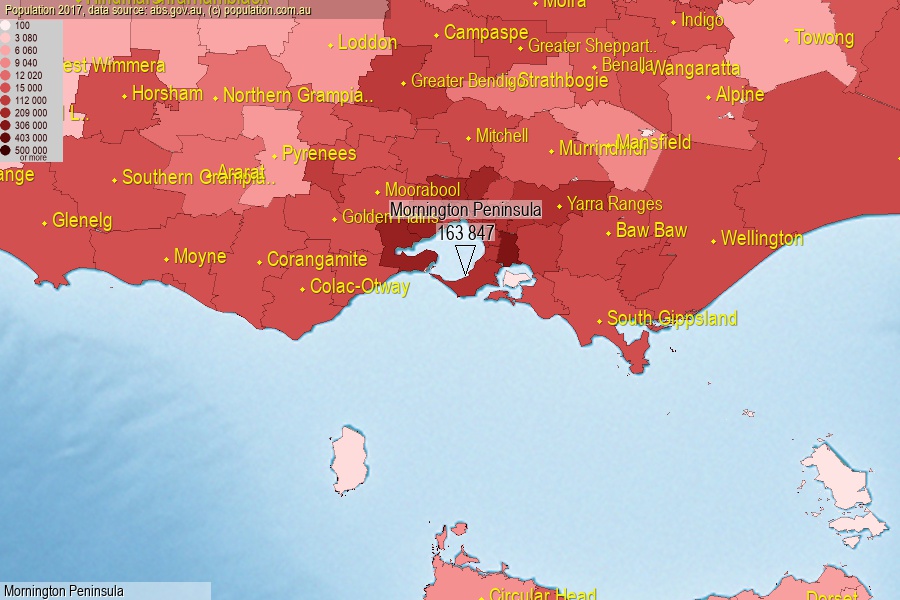 population.com.au
population.com.auLast official estimated population of Mornington Peninsula Shire (as Local Government Area) was 163 847 people (on 2017-06-30)[2]. This was 0.66% of total Australian population and 2.548% of VIC population. Area of Mornington Peninsula is 724.20 km², in this year population density was 226.25 p/km² . If population growth rate would be same as in period 2016-2017 (+1.44%/yr), Mornington Peninsula population in 2025 would be 183 639. [0]



Click to enlarge. Mornington Peninsula is located in the center of the images.
Population [people], population density [p./km²] and population change [%/year] [2]
[1996-2001] +2.24 %/Y
[2001-2002] +1.84 %/Y
[2002-2003] +1.21 %/Y
[2003-2004] +0.78 %/Y
[2004-2005] +0.79 %/Y
[2005-2006] +1.13 %/Y
[2006-2007] +1.74 %/Y
[2007-2008] +1.88 %/Y
[2008-2009] +1.80 %/Y
[2009-2010] +1.05 %/Y
[2010-2011] +0.49 %/Y
[2011-2012] +1.63 %/Y
[2012-2013] +1.52 %/Y
[2013-2014] +1.62 %/Y
[2014-2015] +1.49 %/Y
[2015-2016] +1.70 %/Y
[2016-2017] +1.44 %/Y
[0] Calculated with linear interpolation from officially estimated population
[1] Read more about LGA and Australian Statistical Geography Standard (ASGS) on abs.gov.au
[2] Population data from Australian Bureau of Statistics (Population and density: 2017; change: 2016-2017)
[3] Digital Boundaries: Australian Statistical Geography Standard (ASGS) 2016.